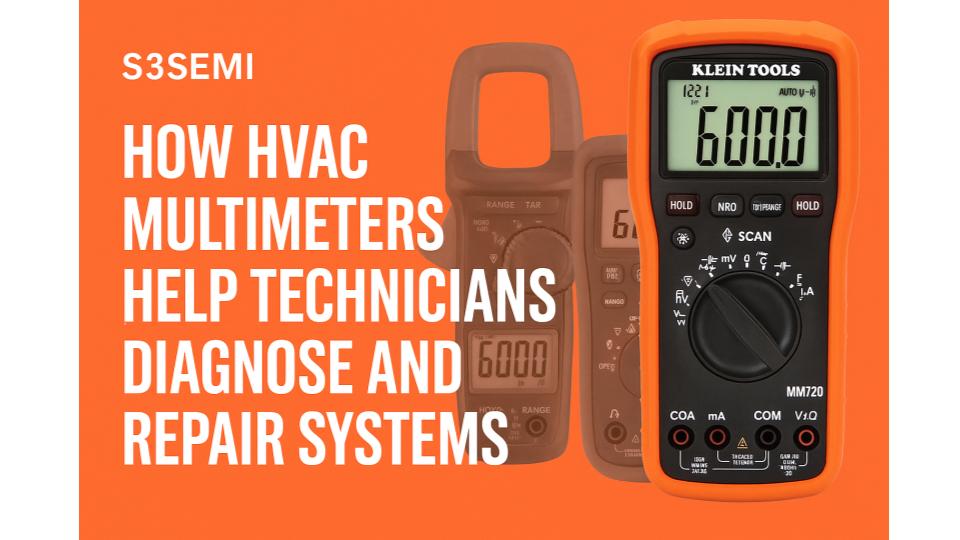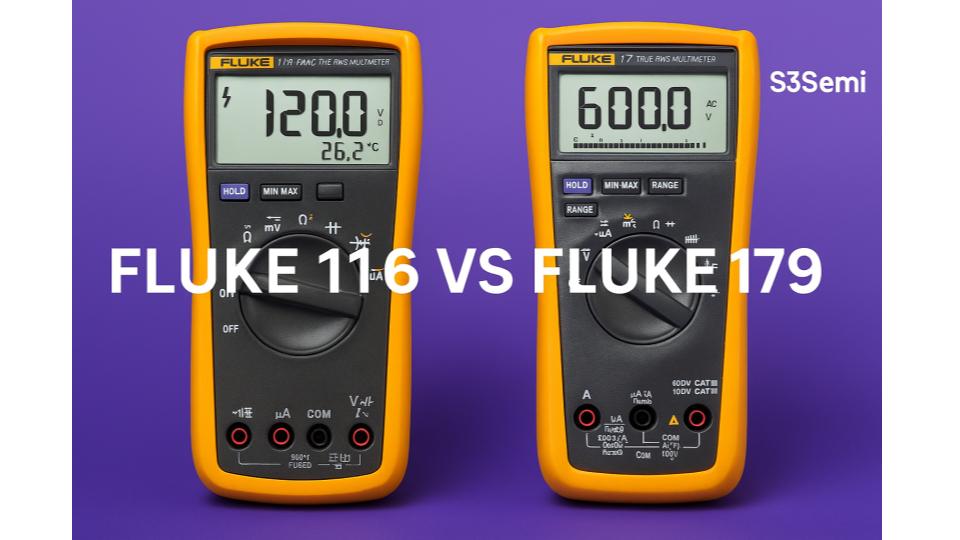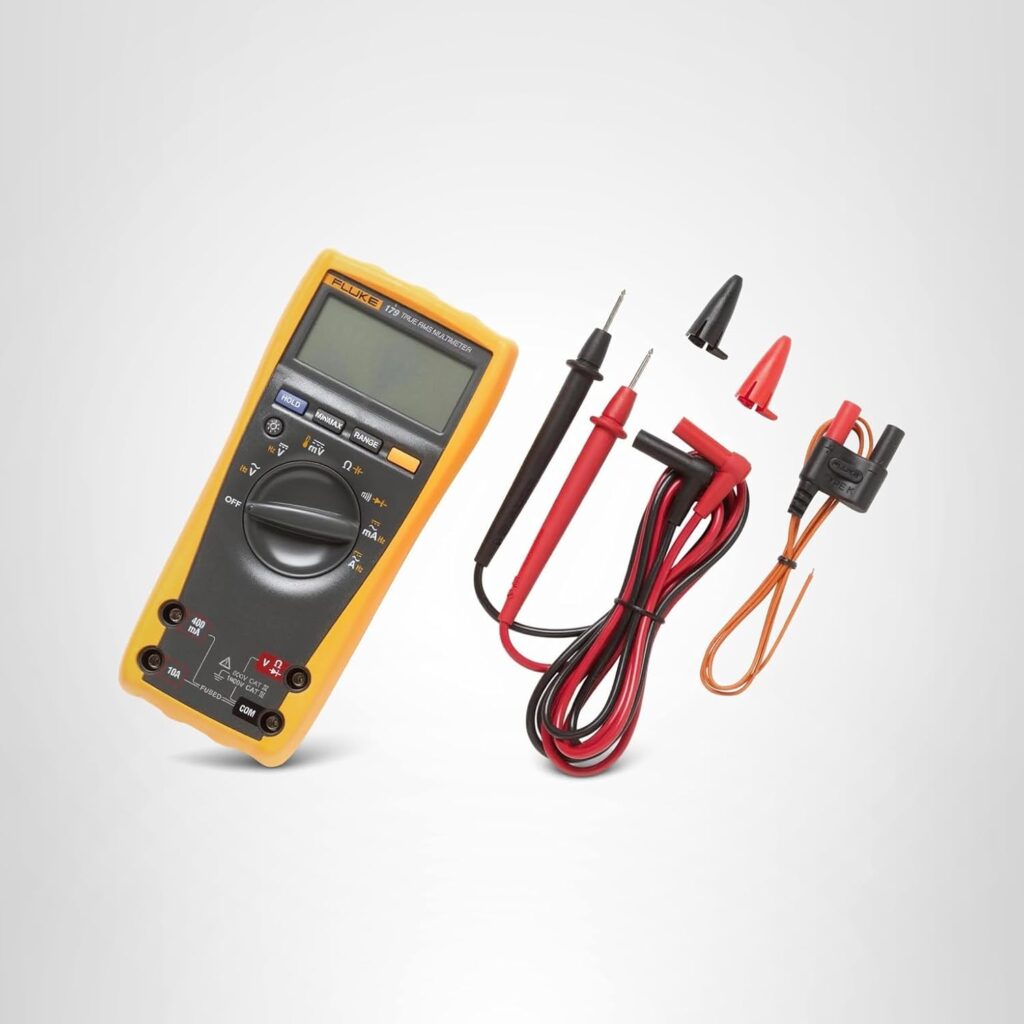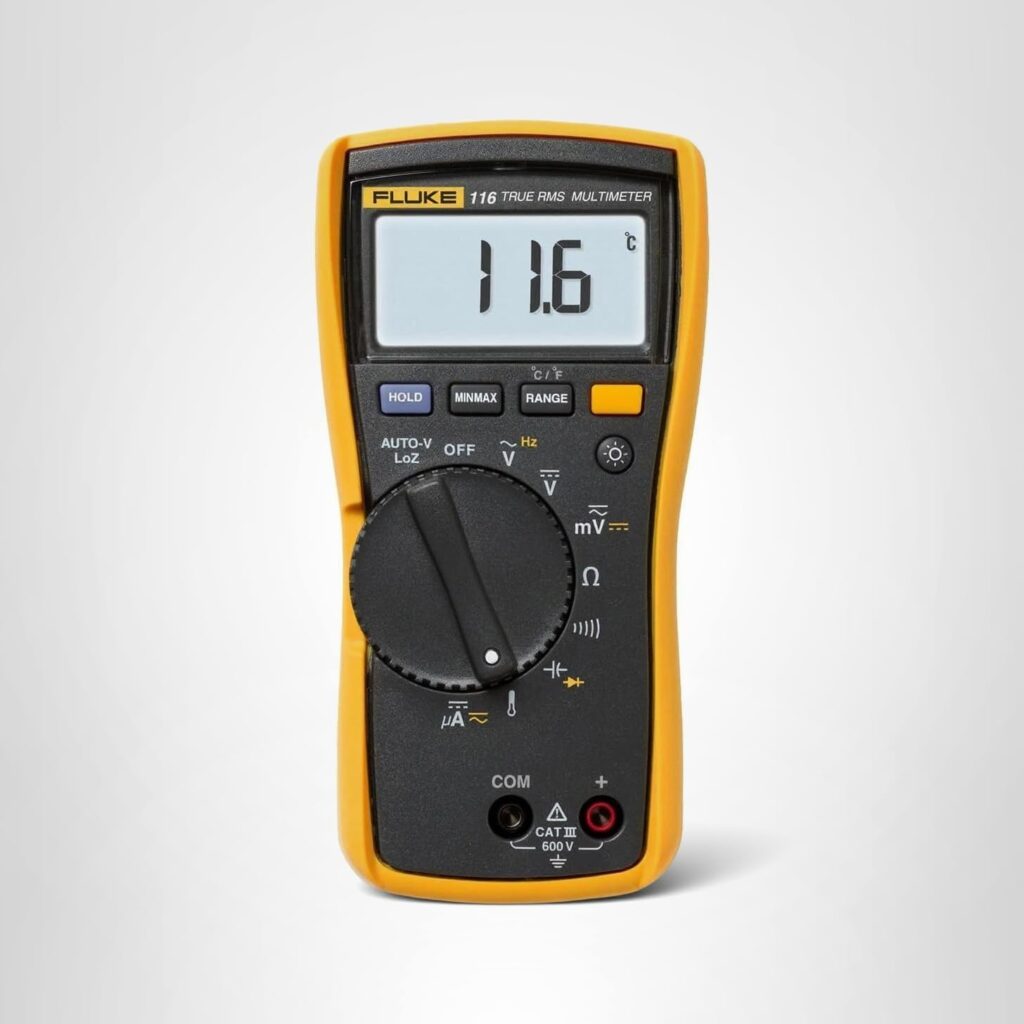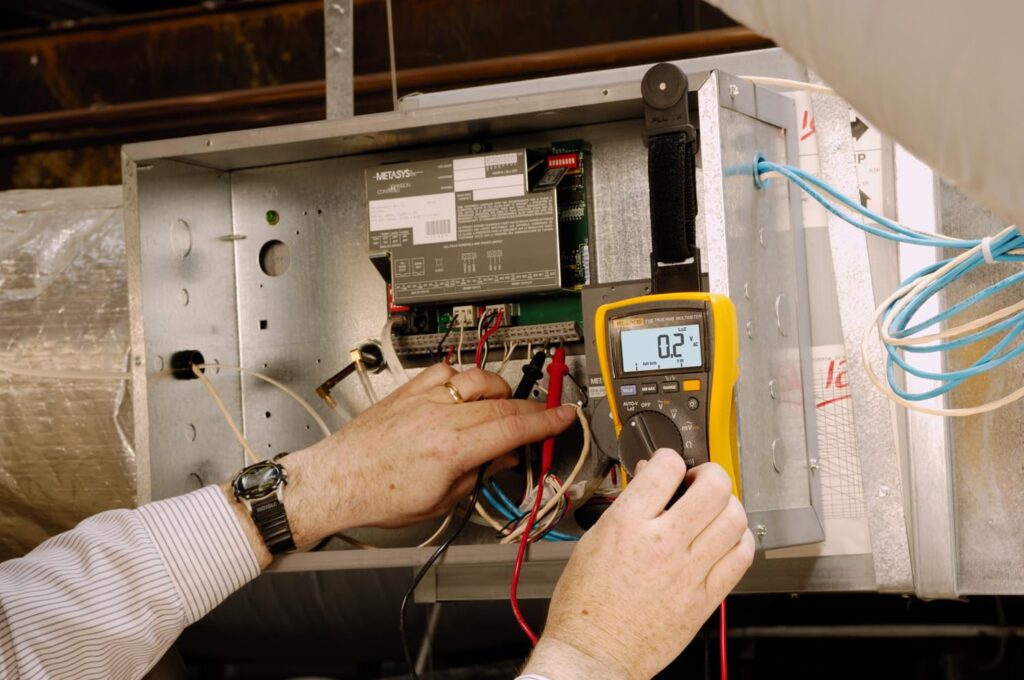Both the Fluke 116 and Fluke 179 are trusted digital multimeters designed for professionals who demand accuracy, durability, and reliability.
🏷️ Fluke Multimeter Deals ⭐⭐⭐⭐
While they share Fluke’s signature build quality and True RMS accuracy, they cater to slightly different users – the Fluke 116 is optimized for HVAC work, while the Fluke 179 is built for broader electrical and industrial applications.
Let’s break down their features and differences to help you choose the right one for your job.
🔍 Overview of the Fluke 116
The Fluke 116 is a True RMS HVAC multimeter designed for heating, ventilation, air conditioning, and refrigeration technicians.
It includes specialized functions for temperature measurement and microamp readings, both essential for diagnosing HVAC systems.
Key Features:
- True RMS for accurate measurements on non-linear loads
- Built-in thermometer for HVAC temperature readings
- Microamp measurement for testing flame sensors
- LoZ (Low Impedance) mode to prevent ghost voltage readings
- Measures voltage, resistance, frequency, and capacitance
- Backlit display for easy viewing in dim environments
- CAT III 600V safety rating
Best For: HVAC professionals who need precise temperature and flame sensor diagnostics in a single tool.
⚙️ Overview of the Fluke 179
The Fluke 179 is a high-performance True RMS multimeter for general electrical and industrial use.
It’s widely used by electricians, engineers, and maintenance technicians who need advanced measurement capabilities and long-term reliability.
Key Features:
- True RMS for accurate AC measurements
- Measures AC/DC voltage, current, resistance, capacitance, frequency, and temperature
- Min/Max/Average recording for capturing signal variations
- Backlit display with analog bar graph
- CAT III 1000V / CAT IV 600V safety rating
- Lifetime warranty
Best For: Professional electricians and engineers who need a versatile, rugged multimeter for industrial or commercial environments.
📊 Fluke 116 vs Fluke 179: Comparison Table
| Feature | Fluke 116 | Fluke 179 |
|---|---|---|
| Target User | HVAC technicians | Electricians / Industrial users |
| True RMS | ✅ Yes | ✅ Yes |
| Temperature Measurement | ✅ Built-in | ✅ With thermocouple |
| Microamp Measurement | ✅ Yes (for flame sensors) | ❌ No |
| LoZ Mode | ✅ Yes | ❌ No |
| Voltage Range | Up to 600V | Up to 1000V |
| Current Measurement | ❌ No | ✅ Yes (up to 10A) |
| Frequency Measurement | ✅ Yes | ✅ Yes |
| Display Type | Backlit digital | Backlit digital with analog bar graph |
| Safety Rating | CAT III 600V | CAT III 1000V / CAT IV 600V |
| Warranty | 3 years | Lifetime |
| 💳 Pricing | 💲Check Price | 💲 Check Price |
✅ Pros and Cons
Fluke 116 Pros
- Designed specifically for HVAC diagnostics
- Built-in thermometer eliminates the need for separate probes
- Microamp measurement for flame sensor testing
- LoZ mode prevents ghost voltage misreads
- Compact and easy to use
Fluke 116 Cons
- No current measurement function
- Lower voltage rating (600V)
- Not ideal for heavy-duty industrial use
Fluke 179 Pros
- Higher voltage rating (up to 1000V)
- Measures current, voltage, resistance, and temperature
- Analog bar graph for monitoring fluctuations
- Rugged construction with lifetime warranty
- Suitable for industrial and commercial applications
Fluke 179 Cons
- No microamp or LoZ mode
- Bulkier than the 116
- Higher cost
🏆 Verdict: Fluke 116 or Fluke 179?
Both multimeters excel in their respective fields, but the right choice depends on your work.
- Choose the Fluke 116 if you’re an HVAC technician who regularly tests flame sensors, temperature sensors, or control circuits. Its built-in thermometer and LoZ mode make it ideal for HVAC troubleshooting.
- Choose the Fluke 179 if you’re an electrician, engineer, or industrial technician who needs a full-featured multimeter for higher voltage, current measurement, and long-term use.
👉 In short:
- Fluke 116 = Best for HVAC diagnostics and low-voltage control work.
- Fluke 179 = Best for industrial, electrical, and general-purpose applications.
What Are HVAC Multimeters and Why They Matter
